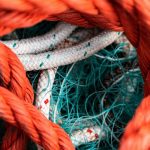The National Oceanic and Atmospheric Administration is currently inviting public comments on a management plan to better halibut population in the central Gulf of Alaska and Southeast fisheries. The plan comes in the form of a “catch sharing plan,” a draft rule recommended by the North Pacific Fishery Management Council to establish a clear stock allocation between the commercial and charter sectors fishing Alaska’s central and southeast areas.
NOAA fisheries management specialist Rachel Baker said that the main aim of this public views is that halibut is a fully allocated fishery and the catch sharing plan really is trying to keep all sectors within their catch limits. He added that the International Pacific Halibut Commission determines the total amount of halibut that can be harvested without causing conservation problems in an area.
Baker also said that the catch sharing plan would primarily make three changes. The first action it would allow for is the allocation of halibut harvest numbers to be combined between both the charter and commercial fisheries. The second action would be to determine preseason harvest restrictions for charter anglers in those areas that are intended to limit harvest to that annual charter allocation.
Experts said that the plan allows for more flexibility through its halibut sharing idea. The plan would authorize transfers of commercial halibut Individual Fishing Quotas to charter halibut permit holders for harvest by anglers in the charter fishery if a charter operator deemed that anglers wanted to catch additional halibut.








